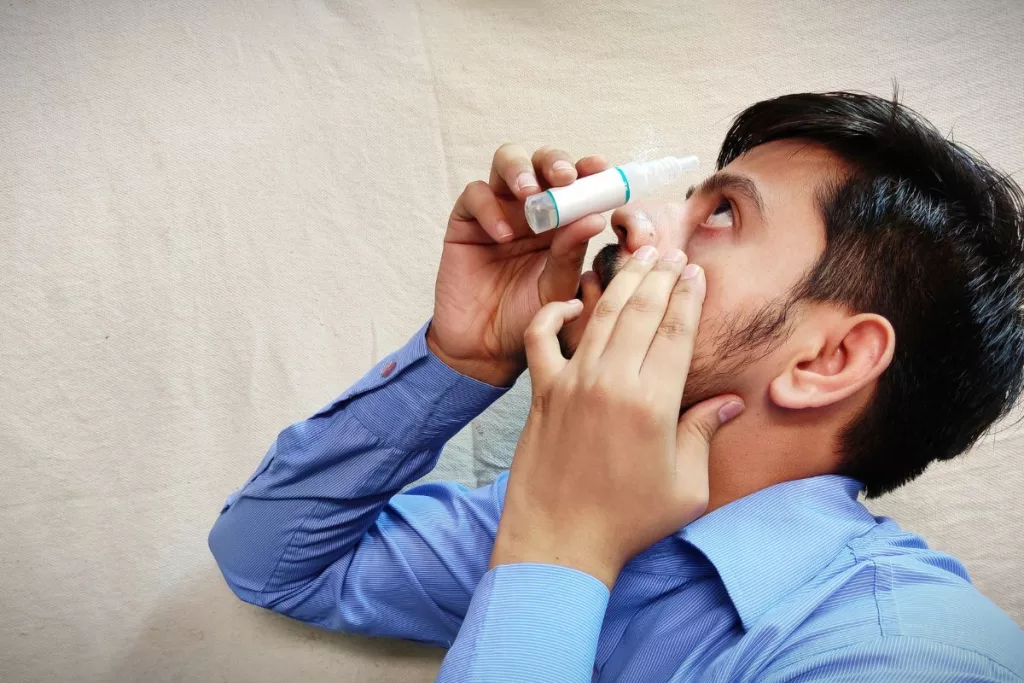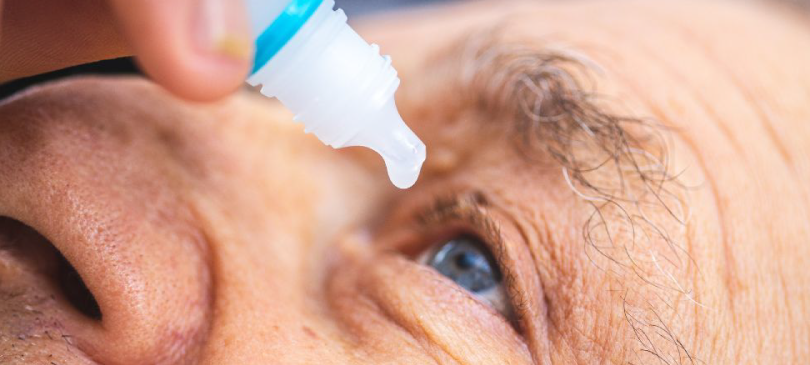Sterile solutions are used to treat many common eye conditions, including styles, conjunctivitis, and dry eye syndrome.
This is a combination of substances – salt and water – where all forms of life have been destroyed. These are an important part of scientific experimentation, medicine, and surgery.
A sterile solution contains 0.9% sodium chloride (salt) which shares a similar concentration to tears and blood.
With this in mind, this guide will explore everything you need to know about sterile solutions and their role in treating eye issues.
Let’s get started.
When Should You Use An Eye-Wash Solution?
Eye wash solutions found in drug stores can be bought and used to remove minor irritants, including chlorinated water and dust particles from the eye.
It can also be used to relieve stinging and burning in the eye by removing foreign substances.
That said, you should keep in mind that eye-wash solution isn’t the same as lubricating eye drops or contact solutions.
Instead, they are used to quickly provide relief and comfort or quickly address minor injuries. Some common reasons why you need an eye wash include:
- Relieving burning or stinging sensations
- Easing irritated eyes
- Removing allergy-causing materials (such as pollen)
- Helps improve itchy eyes
- Removes chlorine from the eyes after being in the swimming pool
You should keep in mind that eye wash solutions aren’t an adequate substitute for allergy or rewetting eye drops. These are only intended to irrigate and flush the eyes.
It is best to use eye drops formulated for allergies or lubrication to help treat your symptoms effectively. If you have an eye infection, you should see your doctor as soon as possible.
They will be able to prescribe you antibiotic eye drops to help improve a bacterial eye infection.
Moreover, there are instances where you should avoid using an eye wash, too, these include:
- If the solution has a strange appearance (in clarity or color)
- If you have burns, cuts, or scrapes near the eye
- If you’re wearing contact lenses (make sure to remove them beforehand)
When it comes to over-the-counter eye-wash solutions, these usually contain purified water. However, they may contain other ingredients causing allergic or uncommon reactions.
Therefore, if you’re experiencing any side effects from your eye wash, you should stop using it immediately and consult a doctor.
Prior to using an eye wash solution, you should make sure to check the expiration date. Plus, read all the instructions and packaging to determine the best storage methods.
How Does Eyewash Help?
Your eyes are naturally protected by your eyebrows, eyelids, and eyelashes. Tears are an innate reaction to contamination in the eye.
Here, your tears act as a natural eye wash which helps to wash your eye of whatever contamination it has come in contact with.
However, sometimes, our natural eyewash simply isn’t enough.
For instance, if a foreign object gets into your eye – like a splinter – or is splashed with bleach, then you’ll need something that will thoroughly cleanse it and remove the object before it injures the eye.
Is Sterile Solution Safe For the Eyes?

Yes, doctor-prescribed or store-bought sterile solution and eye washes are perfectly safe when used as directed. These are designed to be sterile.
In addition, they are sealed at the factory so you can feel confident that they are contaminant-free until you’re ready to use them.
That said, you should still take precautions to prevent the chance of infection and other complications (such as corneal ulcers).
When using any product near your delicate eyes, you should:
- Read the label carefully before using the product
- Make sure your hands are clean
- Consult your doctor if you’re unsure about anything
- Listen to your doctor and follow the instructions
- Don’t reuse any eye wash, drops, or solutions
- Discard eye wash, drops, or solutions that have expired
- Use the same container your solution came in. You don’t want to risk transferring your eyewash into another container.
- Avoid cross-contamination when opening the container.
How To Use Sterile Solution
Performing an immediate irrigation of your eyes can help remove any debris or chemicals that have entered your eyes.
This is a simple process, however, there are a few guidelines you can follow to make sure you achieve an effective flush.
Below, we have outlined a step-by-step process for cleaning your eyes.
- Wash your hands using soap and water – Since you’re already dealing with a foreign object or substance in your eye, you don’t want to run the risk of further affecting the area. Therefore, make sure to wash your hands thoroughly!
- For those that wear contact lenses, make sure to take these out before continuing.
- Start flushing out your eye(s) with warm water – Here you can use a gentle stream of water or sterile solution over your eyes to help remove any foreign matter. During this process, try to keep your eyes open for the best results.
- Be thorough – When it comes to cleaning your eye(s), you’ll want to be as thorough as possible, especially when it comes to chemical exposure. If you have an object in your eye, stop every few minutes to check whether or not it has been flushed out.
Homemade Sterile Solution
Instead of purchasing a sterile solution from the pharmacy, you can easily make it in the comfort of your home.
These solutions are super simple to make and can be achieved with only a few ingredients that you probably already have lying around your kitchen.
You’ll need:
- Table salt or fine sea salt (iodine-free)
- Tap water
- A clean jar
- A microwave-safe bowl or pot with a lid
- Baking soda (optional)
- A teaspoon and a measuring cup
Before doing anything, make sure you prepare a jar to store your solution. Here, use hot water and soap to thoroughly wash the jar and lid.
This prevents bacteria from contaminating your sterile solution.
Stovetop Method
- Boil 2 cups of water for 15 minutes.
- Then cool to room temperature.
- Add 1 teaspoon of salt.
- Add a pinch of baking soda (optional).
- Stir.
- Store it in an airtight container in the refrigerator for up to 24 hours (After this, the solution should be discarded).
Microwave Method
Since the water is boiled, the stovetop method is more sterile than the microwave method. However, with both methods, after 24 hours, bacteria can grow.
- Add 2 cups of water to a container.
- Add 1 teaspoon of salt.
- Microwave, covered, for only 1 or 2 minutes.
- Cool.
- Place in a cleaned jar.
- Keep in the refrigerator for up to 24 hours.
If you want something that will last longer, you can achieve this with distilled water. This can be purchased at your local grocery store or pharmacy and can even be made at home.
Final Thoughts
When it comes to matters of the eye, it is important to be super careful. This is because the eye is very sensitive and fragile.
Therefore, when you have debris or a foreign object in your eye, you’ll want to take the appropriate measures to remove it.
Hopefully, this guide has informed you on everything you need to know about the sterile solution and how it can help your eye issues.




